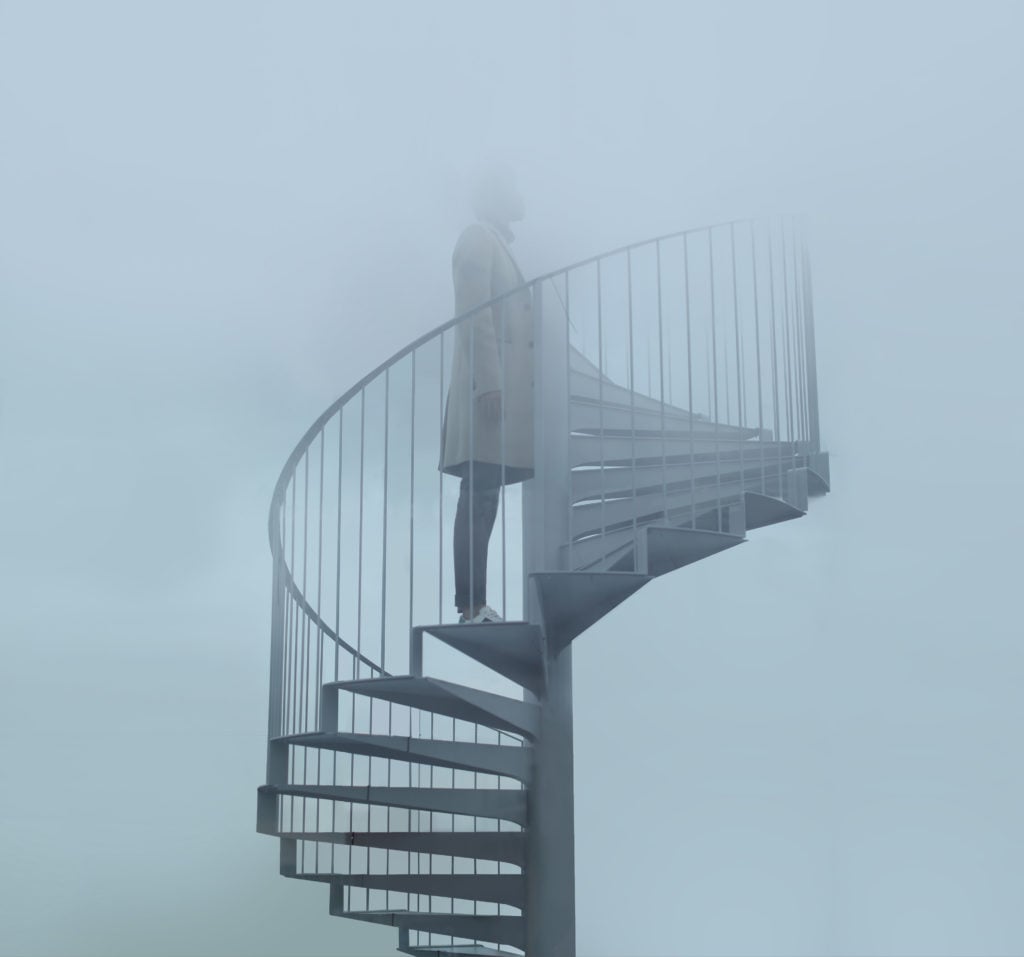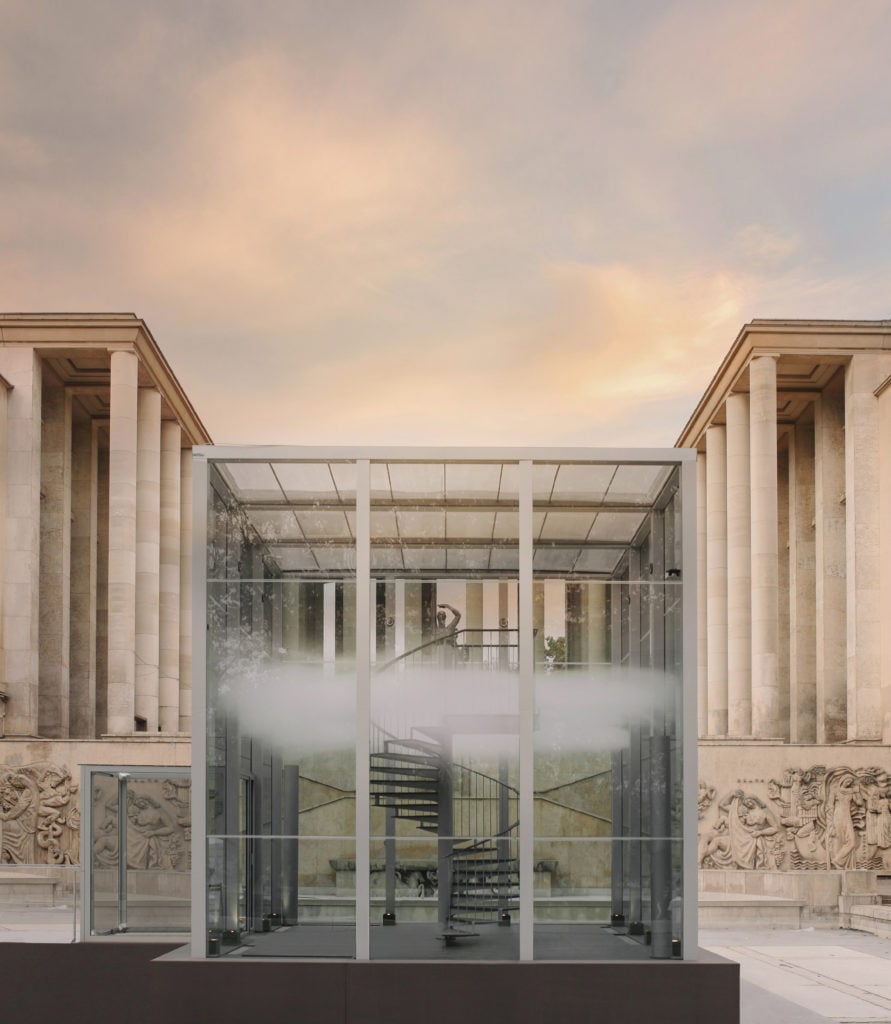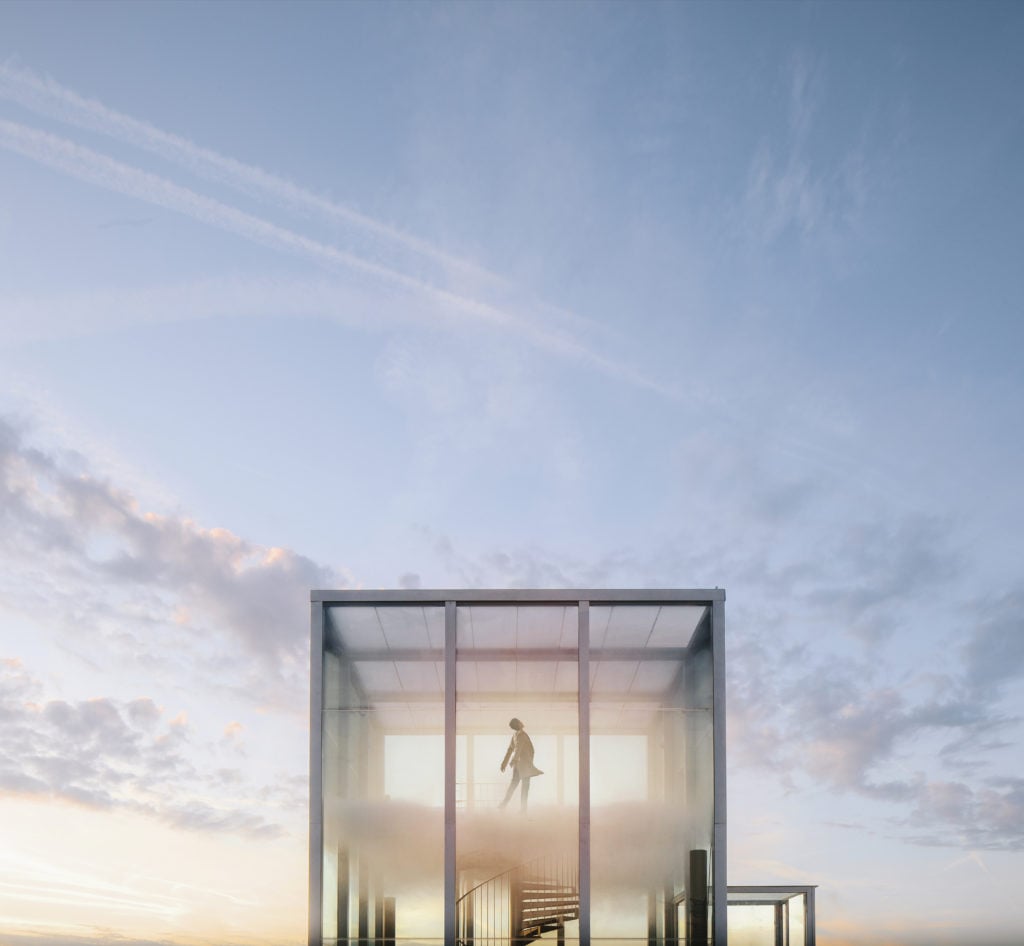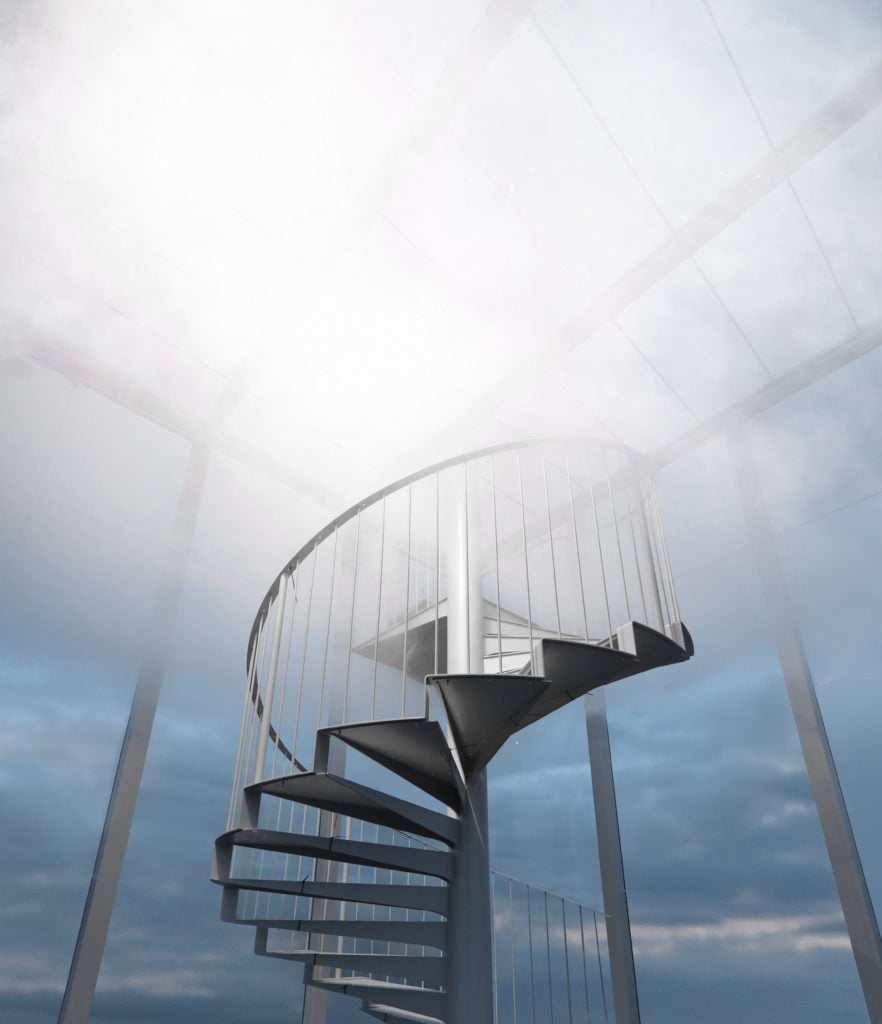Art World
With a Scented Cloud Floating in Paris, Cartier Transformed Perfume Into a Work of Art
Outside the Palais de Tokyo, a bit of modern magic had a spellbinding effect.

Outside the Palais de Tokyo, a bit of modern magic had a spellbinding effect.

Nazanin Lankarani

Paris’s premier contemporary art fair, the Foire Internationale d’Art Contemporain, known as FIAC, is a platform for art in all its iterations, with a varied offering of works on the cutting edge of evolving artistic practice.
Among the endless possible combinations of paint, paper, canvas, wood, bronze, clay, dirt, plastic, film, light, and sound that were on show in this year’s edition—which took place last week—was a remarkable installation by Cartier that offered “scent” as a medium of “artistic expression.”
During the fair, the luxury brand chose the shallow reflecting pool (drained of its murky waters) outside the Palais de Tokyo, Paris’s most avant-garde art center, to show an installation billed as “OSNI 1- Le Nuage Parfumé,” or “Unidentified Scented Object 1 – Scented Cloud.”
Inside the cube, which stood about two stories high, a spiraling metal staircase led to a landing above a fluffy white cloud hanging midway above ground, made up of vapors diffused out of a tube like a fog machine in a nightclub.

The site for Cartier’s “Scented Cloud” installation outside Paris’s Palais de Tokyo. Photo by Quyen Mike, courtesy of Cartier.
Visitors were invited to enter the cube and climb up the staircase. Traversing the thick cloud on the landing, they could experience—against a stunning view of the Eiffel Tower—the perceptibly warmer air above the cloud and the enveloping scent of L’Envol, a masculine fragrance created by Cartier’s in-house perfumer, Mathilde Laurent.
“This is not a product launch,” Laurent said. “It is meant to open the door to contemporary olfactory art. We did it to show that perfume inspired by poetry can provoke an emotional reaction, just like music or film.”
“Scented Cloud” is the first of a series of olfactory events that Cartier has promised to produce in concert with other forms of artistic and scientific expression.
“Why should scent be neglected as a source of art?” Laurent asked. “Today perfume is viewed as a consumer product that you buy and wear. We wanted to liberate it from that limited vision and allow it to exist for its own beauty and artistic dimension.”
In that spirit, although L’Envol—which was launched by Cartier in 2016—is the raison d’être for the event, nowhere on the installation does the house advertise its fragrance or any other Cartier product.
“If you are making perfume and you want that art to live on, you must show its artistic value,” Laurent explained.
Cartier, certainly, is no stranger to fine art. In 2014, it celebrated the 30th anniversary of the Fondation Cartier, its corporate-financed art center headquartered in a glass-and-steel structure in Paris’s 14th Arrondissement designed by Jean Nouvel, in effect a larger version of the glass cube set up to house Scented Cloud.

Another view of the installation. Photo by Quyen Mike, courtesy of Cartier.
As for the technology behind the immersive experience of “Scented Crowd,” that is owed to the Munich-based firm, Transsolar, a climate-engineering firm that provided the scientific input Cartier needed to create the installation.
“The ‘Scented Cloud’ is essentially warmer air resting on colder air, and a fogging system to separate the two using a visible fluid made of a mixture of water and paraffin,” explained Wolfgang Kesling, a physicist with Transsolar who installed the cloud. “Its like a foamy cappuccino, with warmer and colder layers.”
“Scented Cloud” is a continuation of “Cloudscapes” that Transsolar had presented at the Venice Architecture Biennale in 2010 in which it had created a cloud inside the Arsenale, a work that was also shown in 2012 at the Tokyo Museum of Contemporary Art.
The use of scent in art is not new. Numerous artists have incorporated the sense of smell into their vision of an aesthetic experience, going back to Marcel Duchamp’s Air de Paris (1919), a work that involved a pharmaceutical glass phial filled with genuine Paris air.
At FIAC, this year, the Brussels-based gallery Meessen De Clercq presented an installation by the artist Claudio Parmiggiani made of smoke and soot on wood, representing the silhouette of books in a scorched library, with the faint smell of smoke lingering as a reminder of what the fire had destroyed.

The stairway into the clouds. Photo by Quyen Mike, courtesy of Cartier.
The Berlin-based artist, Sissel Tolaas, has worked since the 1990s on various aspects of “smell,” creating in 2005 a project titled Sweat Fear I Fear Sweat that examined the body odors of 20 phobic men, whose smells she collected and chemically reproduced.
In 2011, the DIA Art Foundation and the Hispanic Society of America presented a scent installation by the Korean artist Koo Jeong A titled Before the Rain that evoked the atmosphere of an Asian city on a steamy day, made in collaboration with International Flavors & Fragrances, a maker of synthetic scents.
In a similar vein, “Scented Cloud” creates an aesthetic and intellectual experience—and, as an experimental installation that explores the possibilities of virtual architecture, it is a reminder of how magical science can be.